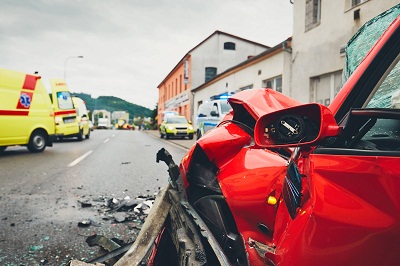Florida is a thriving state constantly undergoing a variety of changes and developments. As our population of residents increases, the necessity for construction to match the demand for growth does too. This includes expanding highways, repaving city streets, and integrating transportation options—which often means miles of orange cones and backed up traffic.
But road construction can cause more than driver frustration. With it comes an increase in car accidents and the injuries that result from them. As you navigate Florida’s streets, it’s important to understand how to appropriately drive through construction zones and what your options are should you be involved in an accident.
How Construction Causes Car Accidents
Construction zones create hazardous conditions for drivers in three primary ways: changes to road conditions, reduced driver visibility, and altered traffic patterns.
When roads go under construction, old surfaces may need to be broken up or removed. Driving over such conditions can lead to cars popping tires, swerving unexpectedly, or having other mechanical issues. When this happens, and driving becomes unintentionally erratic, it can lead to an increase in the likelihood that an accident will occur. Other hazardous road conditions can result from the construction equipment itself, such as debris spilling out into driving areas. If it hits another vehicle, it can cause serious damage, additional vehicle involvement, and injury.
When road construction workers set up their construction space, it can also cause changes in road visibility for drivers. Equipment, large machinery, and temporary warning signs can often be placed in areas that make it more difficult for drivers to see their route or traffic ahead of them. This decrease in visibility can lead to serious car accidents.
And finally, road construction almost always leads to a change in normal traffic patterns or posted speed limits. Most drivers take the same routes to work, school, or local stores and are used to the way the direction and speed of traffic on those roads flows. When construction starts, however, there may be a reduction in lanes, a reduction in speed, or a shift in routes by using cones or warning signs. If drivers aren’t paying careful attention to these changes, it can lead to collisions with other cars, traffic barriers, or construction equipment. These kinds of collisions can lead to severe harm, such as lacerations, broken bones, or even brain injuries and spinal trauma.
How You Can Prevent Car Accidents in Construction Zones
Anytime you get behind the wheel of a car, it’s important remain alert and vigilant, no matter the road conditions. This includes making sure you are thoroughly rested and not intoxicated, as well as decreasing the number of distractions inside the car, like cell phone use, eating, or rowdy passengers.
When it comes to navigating construction zones, however, an adamant course of action to follow in order to avoid accidents is to simply slow down. It’s common for active construction zones to post reduced speeds, and if you don’t follow these specific speed limits, not only do you increase your risk of an accident occurring, but you also open yourself up to hefty tickets and fines.
Slowing your driving can give you time to analyze the altered route in front of you, thoroughly read any signage instructing you on what to do, and gives you more time to react to happenings around you. If the car in front of you stops or swerves suddenly, or construction equipment rolls into the road, driving at a slower speed means having better ability to react. Also make sure to never tailgate the car in front of you—just as you would on any normal road or highway, give ample room between you and the next car.
Often times, road construction will result in the need for cars to merge together into fewer lanes. When this happens, always merge as soon as possible. Don’t wait fight your way ahead then merge over at the last second. Cooperating with other cars ensures that traffic flows efficiently and everyone gets through the zone as quickly and safely as possible. It also keeps you and other cars from blocking traffic, another potentially dangerous situation that can result from construction.
And finally, it pays to plan ahead. If you’re aware of road construction on your driving route, be sure to leave for your destination earlier than usual. This way you can prevent the frustration and road rage that often accompany the feelings of running late thanks to construction delays. You can also plan to take another construction-free route entirely to save yourself from the temporary risks of navigating your regular route.
What to Do if Construction Caused Your Car Accident
No matter how vigilantly we drive or adequately we plan ahead, sometimes accidents can’t be avoided. They can be caused by other drivers, unpredictable events, or even improper behavior by construction workers. If you find yourself in the midst of an accident caused by the circumstances of road construction, there are certain protocols you should follow.
First, address any injuries as needed. Call the paramedics and/or police to aid anyone who might need further assistance. Then, if you are able, clear any vehicles involved in the accident out of the driving route. But be careful when you do so—you’re in a construction zone, meaning there’s likely less room to maneuver your car. Work with the construction team to find a safe place to pull over. Then, assess and record the damage to each vehicle, note road conditions, exchange information with drivers and/or workers, and gather any available witness information as needed. These will all be important to have if you end up filing a claim for damages.
The construction company itself or even the government may be deemed liable for your accident that occurred in a work zone for several reasons: They may not have properly alerted drivers about hazards by using adequate signage; they may have left equipment in the road where it was hazardous to drivers; maybe they failed to guide traffic through the zone as necessary; or they may not have properly marked temporary lanes for drivers to follow. All these scenarios can lead to car accidents and serious injury, meaning you have a right to compensation for treating the damage you suffered.
But the process of filing a claim against construction companies, government agencies, and their insurers can be a lot more complicated than the process behind a “normal” car accident claim. That’s why you’ll want to consult with an experienced car accident and personal injury team like The Whisler Law Firm. We can help you gather the evidence you need to make you case and help you gain compensation for things like medical bills, lost wages, and other pain and suffering. Call our office at 833-529-5677 or fill out our online form to schedule your free consultation with our team today.



